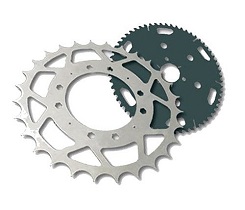Laser cutting technology is widely used in the processing of metal and non-metal materials.

It can greatly reduce the processing time, reduce the processing cost and improve the quality of the workpiece.
Laser cutting is achieved by applying high power density energy generated by laser focusing.
Compared with traditional sheet metal processing methods, laser cutting has the advantages of high cutting quality, high cutting speed, high flexibility (any shape can be cut at will), and wide material adaptability.
Laser melt cutting
In laser melt cutting, the workpiece is partially melted and the molten material is ejected by means of gas stream.
Since the transfer of material occurs only in its liquid state, this process is called laser melt cutting.
The laser beam is matched with a high-purity inert cutting gas to cause the molten material to leave the slit, and the gas itself does not participate in the cutting.
Laser melt cutting can result in higher cutting speeds than gasification cutting.
The energy required for gasification is generally higher than the energy required to melt the material.
In laser melt cutting, the laser beam is only partially absorbed.
The maximum cutting speed increases as the laser power increases, and decreases almost inversely proportionally as the thickness of the sheet increases and the melting temperature of the material increases.
In the case of a constant laser power, the limiting factor is the air pressure at the kerf and the thermal conductivity of the material.
Laser melt cutting provides an oxide-free cut for the iron material and titanium metal.
The laser power density that produces melting but less than gasification is between 104 W/cm²and 105 W/cm² for steel materials.
Laser flame cutting
Laser flame cutting differs from laser melting cutting in that oxygen is used as the cutting gas.
A chemical reaction is generated to further heat the material by means of the interaction between oxygen and the heated metal.
For structural steels of the same thickness, the cutting rate obtainable by this method is higher than that of melt cutting.
On the other hand, this method may have a worse cut quality than melt cut.
In fact it produces wider slits, significant roughness, increased heat affected zone and worse edge quality.
Laser flame cutting is not good when machining precision models and sharp corners (there is a danger of burning sharp corners).
Pulse mode lasers can be used to limit thermal effects.
The laser power used determines the cutting speed.
In the case of a constant laser power, the limiting factor is the supply of oxygen and the thermal conductivity of the material.
Laser gasification cutting
During the laser gasification cutting process, the material is vaporized at the kerf, in which case very high laser power is required.
In order to prevent the material vapor from condensing onto the slit wall, the thickness of the material must not exceed the diameter of the laser beam.
This processing is therefore only suitable for applications where it is necessary to avoid the exclusion of molten material.
This processing is actually only used in the small field of use of iron-based alloys.
This processing cannot be used for materials such as wood and certain ceramics that are not melted and are therefore less likely to recondense the material vapor.
In addition, these materials typically require thicker cuts.
In laser gasification cutting, the optimal beam focus depends on the material thickness and beam quality.
Laser power and heat of vaporization have only a certain effect on the optimal focus position.
The required laser power density is greater than 108 W/cm² and depends on the material, depth of cut and beam focus position.
In the case where the thickness of the sheet is constant, assuming sufficient laser power, the maximum cutting speed is limited by the gas jet velocity.
Copyright © Jiangsu Hoston Machine Tools Co., Ltd. (Hongkong Hoston Group CO., LIMITED)All Rights Reserved | Sitemap Technical Support: 